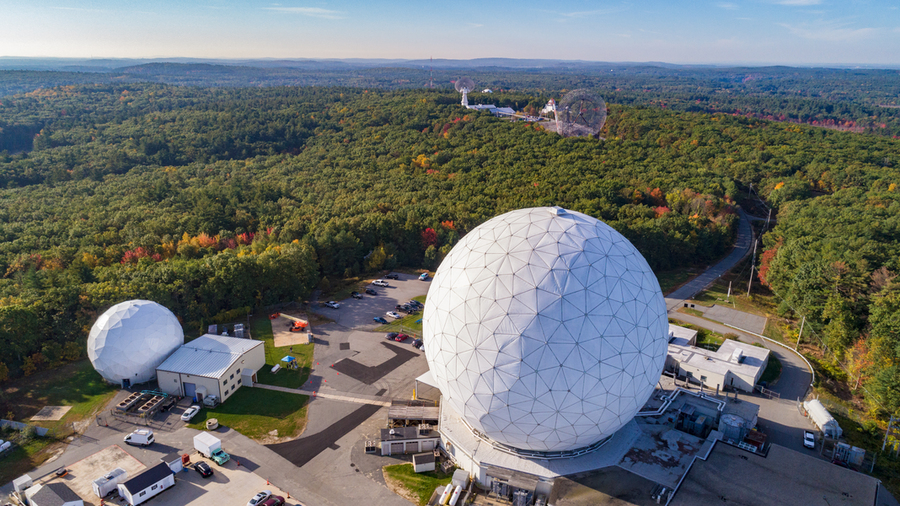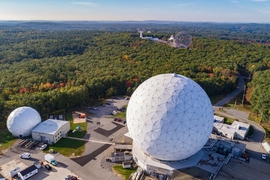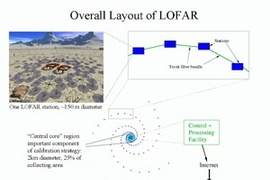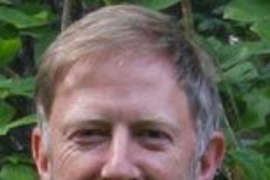Philip J. Erickson has been named the new director of MIT Haystack Observatory, effective Jan. 1, 2024. In leading the radio science observatory in Westford, Massachusetts, Erickson, who is currently Haystack's associate director, succeeds longtime director Colin J. Lonsdale, who earlier this year shared his intent to step down.
Maria Zuber, MIT's vice president for research, announced Erickson’s appointment today, saying, “Phil is an accomplished radio scientist and ionosphere-magnetosphere researcher with a strong track record of leadership within the Haystack research community and well beyond.”
“The observatory and its community of researchers are in excellent hands,” she added.
An interdisciplinary research center, MIT Haystack Observatory was built in 1961 as part of MIT Lincoln Laboratory and gained independent status in 1970. The Haystack mission is to develop technology for radio science applications, to study the structure of our galaxy and the larger universe, advance scientific knowledge of our planet and its space environment, and contribute to the education of future scientists and engineers. Research groups in astronomy, geodesy, geospace, and space technology are united by a focus on radio science. Located approximately 30 miles northwest of MIT’s Cambridge campus, the Haystack facility supports a number of large radio telescopes and antennas. Research and engineering projects encompass both local radio science and technology development as well as global leadership and collaboration in the field.
Erickson obtained his doctorate in space plasma physics from Cornell University in 1998; he began science and technical work at Haystack in 1995 and has served as head of its atmospheric and geospace sciences group since 2015. Erickson joined the Haystack director’s office as assistant director also in 2015 and was appointed associate director in 2020. He is the lead principal investigator for several projects, including the National Science Foundation-sponsored Millstone Hill Geospace Facility. He co-directs Haystack’s educational and public outreach programs as well as the observatory’s student research programs.
The observatory will continue to build upon its history of radio science innovation, Erickson says: “Haystack Observatory has long been recognized as a leader in the science and technology of radio and radar remote sensing for fundamental research on regions that stretch from our planet’s polar caps and upper atmosphere to the solar system, black holes, stars, galaxies, and even the structure of the early universe. I am excited to work with the dedicated and very talented Haystack staff to continue and expand our research in all these areas, for the benefit of humanity’s constant quest to expand knowledge of our world and universe.”
Within the geospace science field, which studies the coupled Earth-sun system, Erickson's primary interests focus on fundamental physics and dynamics of the ionized and neutral portions of Earth's upper atmosphere and surrounding magnetosphere, along with the observational technique of collective Thomson/incoherent scatter radar theory and practice.
In addition to the various leadership roles he holds within Haystack, Erickson is dedicated to fostering community engagement in the fields of geospace sciences and radio wave remote sensing; he serves as a member of numerous national and international groups, including the National Academies of Science, Engineering, and Medicine (NASEM) Committee on Radio Frequencies, and is a co-chair of the ionosphere-atmosphere panel in the 2024-33 NASEM Heliophysics Decadal Survey. He is a frequent journal reviewer and serves as editor for several peer-reviewed publications. Erickson is also an active member of the amateur radio community, with a focus on engaging operators across the United States in productive ionospheric citizen science.
Erickson succeeds Colin Lonsdale, who is stepping down as Haystack director after more than 15 years at the helm. Lonsdale, a radio astronomer, earned his doctorate degree in 1981 from the Jodrell Bank Observatory, a part of the Victoria University of Manchester in the U.K. He joined Haystack in 1986 and was named director in 2008. Lonsdale will be continuing at Haystack as a principal research scientist, focusing on research involving a range of topics including active galaxies, solar emissions at low radio frequencies, and concepts for innovative radio science space missions.
“Phil Erickson is an outstanding choice for the new director, and the observatory will prosper under his capable leadership,” says Lonsdale.











